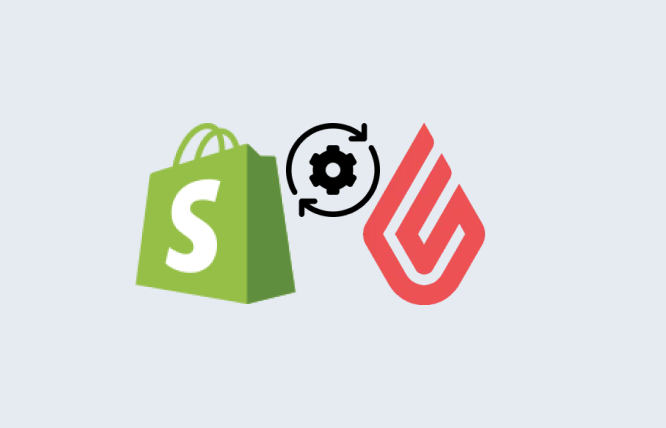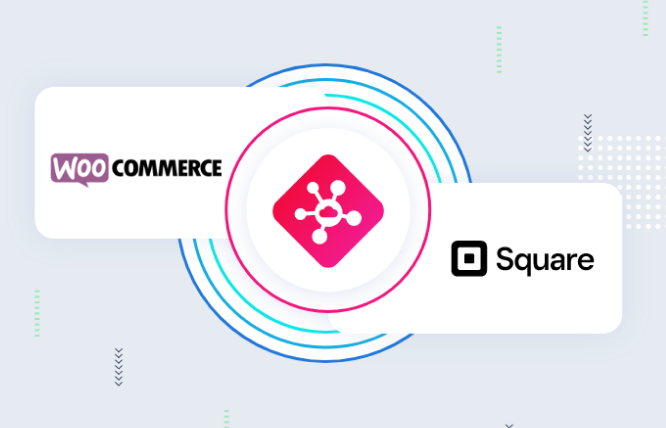Introduction
Businesses need to incorporate POS systems in their online store if they want to stand a chance in the rapidly expanding market. With Lightspeed Shopify integration, businesses can ensure their performance and work towards growing their online store. This article will discuss the benefits of integrating Lightspeed and the steps to integrate the tool to your Shopify store.
Lightspeed is an ecommerce/retail platform that can be easily integrated to Shopify to enhance performance and processes. Integrating a POS system to your online store can make a huge difference in automating your workflows. According to a survey conducted by Retail Consulting Partners, Omnichannel integration and an order management system (OMS) are the top POS priorities for retailers.
In this article we will discuss the importance of Lightspeed Shopify integrations, the benefits you can enjoy by using the tool and the steps needed to integrate this system optimally.
What is Lightspeed and How Does it Impact Your Online Business?
Lightspeed is a cloud-based commerce platform designed to help businesses manage their retail operations effectively. It offers a suite of solutions tailored for retail and restaurant businesses, including point-of-sale (POS) systems, inventory management, customer relationship management (CRM), and e-commerce capabilities.
With Lightspeed, businesses can streamline their operations, improve customer experiences, and drive growth. The platform is known for its user-friendly interface, robust features, and scalability, making it a popular choice for retailers of all sizes. Following are the benefits your Shopify business can enjoy with Lightspeed Shopify integration.
Improved Inventory Management
In terms of inventory management, the integration of Lightspeed with Shopify delivers real-time updates and helps prevent overselling. It facilitates automatic reordering of low-stock items, ensuring products are consistently available for purchase. This functionality aids businesses in maintaining well-stocked inventory levels and mitigating the risk of running out of popular items.
Customer Management
The integration also enhances customer relationship management capabilities by providing tools to manage customer profiles, order history, and loyalty programs. This comprehensive approach enables businesses to gain deeper insights into their customers’ preferences and behavior, ultimately allowing for more personalised interactions.
Centralised Order Management
Another notable benefit is centralised order management. With Lightspeed, businesses can efficiently handle orders from various sales channels within a single platform, including Shopify. This streamlines the order fulfillment process and minimises errors, thereby enhancing operational efficiency and customer satisfaction.
Enhanced Customer Experience
Lightspeed’s omnichannel capabilities enable businesses to deliver a seamless shopping experience across online and in-store channels. This cohesive approach fosters improved customer loyalty and encourages repeat business, ultimately contributing to a more robust customer experience.
Lightspeed Shopify Integration Functionalities
The integration between Lightspeed and Shopify offers a range of functionalities designed to enhance operational efficiency and provide a seamless shopping experience for customers. Some key functionalities include:
Unified Inventory Management
Lightspeed Shopify integration enables businesses to manage inventory across multiple sales channels from a single platform. This includes real-time inventory updates, automatic syncing of product information, and centralised control over stock levels.
Order Synchronisation
Orders placed on Shopify are seamlessly synchronised with Lightspeed, allowing businesses to efficiently process and fulfill customer orders. This synchronisation helps prevent overselling and ensures accurate order management.
Product Catalog Management
Businesses can easily manage their product catalogs across both Lightspeed and Shopify platforms. This includes creating, updating, and deleting products, as well as managing product variants and categories.
Customer Relationship Management (CRM)
The integration provides tools for managing customer profiles, order histories, and loyalty programs. This enables businesses to gain insights into customer behavior, personalise marketing efforts, and foster long-term customer relationships.
Omnichannel Selling
Lightspeed Shopify integration supports omnichannel selling by enabling businesses to seamlessly sell products online and in-store. This unified approach allows customers to shop across different channels while maintaining a consistent experience.
Reporting and Analytics
The integration offers robust reporting and analytics capabilities, allowing businesses to track sales performance, monitor inventory levels, and analyse customer behavior. This data-driven insight enables informed decision-making and optimisation of business processes.
Customisation and Scalability
Lightspeed Shopify integration is customisable to suit the unique needs of each business. It offers scalability to accommodate growth and expansion, ensuring that businesses can adapt to changing market dynamics and customer demands.
Steps For Lightspeed Shopify Integration
While to steps for optimisation are relatively easy, there are certain factors that need to be kept in consideration when integrating lightspeed. It is advised to recruit the help of a professional ecommerce development company to ensure that the mapping of data and configuration of the tool is done in a way that allows you to gain the maximum benefit of the tool. Following are the steps you need to follow to integrate Lightspeed to Shopify.
Choose Lightspeed and Shopify Plans
Ensure you have active subscriptions for both Lightspeed and Shopify. Select the appropriate plans based on your business needs and requirements.
Install Lightspeed POS App
In your Shopify admin dashboard, navigate to the Shopify App Store and search for the Lightspeed POS app. Install the app and follow the prompts to connect it to your Lightspeed account.
Configure Integration Settings
Once the Lightspeed POS app is installed, configure the integration settings according to your preferences. This may include syncing product catalogs, inventory management settings, and order fulfillment options.
Map Products and Variants
Map your products and variants between Lightspeed and Shopify to ensure accurate synchronization. This step involves matching products in Lightspeed with corresponding products in Shopify to maintain consistency across both platforms.
Enable Order Synchronization
Enable order synchronization to ensure that orders placed on your Shopify store are automatically synced with Lightspeed for processing and fulfillment. Configure settings for order routing, payment processing, and shipping methods as needed.
Test Integration
Before going live, conduct thorough testing to ensure that the integration is working correctly. Place test orders on your Shopify store and verify that they are accurately reflected in Lightspeed POS. Check inventory levels, product details, and order statuses to confirm synchronization.
Train Staff
Provide training to your staff on how to use Lightspeed POS with Shopify. Ensure they understand the workflow for processing orders, managing inventory, and accessing customer information through the integrated system.
Monitor Performance
Continuously monitor the integration’s performance and address any issues or discrepancies promptly. Regularly review reports and analytics to track sales, inventory levels, and customer behavior across both platforms.
Optimize Settings
Fine-tune integration settings and configurations based on feedback and performance metrics. Make adjustments to improve efficiency, accuracy, and overall customer experience.
Go Live
Once you are confident in the integration’s functionality and performance, go live with Lightspeed Shopify integration. Monitor operations closely during the initial rollout phase and make any necessary refinements to ensure smooth operation.
Conclusion
Lightspeed is one of the most popular tools when you are looking for a POS systems that can optimise the performance of your online business. While the tool is straightforward, you would need to recruit Shopify Plus agencies to properly map, configure and integrate Lightspeed to your online store.
Contact FuturByte and learn how we can optimise the performance of your Lightspeed Shopify integration. Get a free consultation today.
Also Read:Hire Someone to build Shopify Store
Frequently Asked Questions
Lightspeed Shopify integration is a connection between the Lightspeed point-of-sale (POS) system and the Shopify e-commerce platform. It allows businesses to synchronize their product catalog, inventory, and orders between the two platforms, enabling seamless omnichannel retail operations.
Lightspeed Shopify integration offers several benefits, including centralized inventory management, streamlined order processing, and improved customer experience. It enables businesses to sell both online and in-store while maintaining consistent product data and inventory levels across channels.
Lightspeed Shopify integration is ideal for retail businesses looking to expand their online presence while leveraging their existing Lightspeed POS infrastructure. It is particularly beneficial for brick-and-mortar stores seeking to establish an omnichannel retail strategy.
Setting up Lightspeed Shopify integration involves installing the Lightspeed POS app from the Shopify App Store, configuring integration settings, mapping products and variants, enabling order synchronization, and conducting thorough testing before going live.
Yes, Lightspeed Shopify integration can efficiently manage large product catalogs with thousands of SKUs. The integration allows businesses to sync product data, images, and inventory levels between Lightspeed and Shopify, ensuring accurate representation of products online.
Have questions or feedback?
Get in touch with us and we‘l get back to you and help as soon as we can!




